
Tin Mining Festival 2018 returns at the Kinta Tin Mining (Gravel Pump) Museum, Kampar. The festival was held from 3 to 4 November 2018. It was jointly organised by UTAR, the Kinta Tin Mining (Gravel Pump) Museum and the Perak Chinese Mining Association.
Held for the fourth time since its inaugural launch in 2015, the annual festival through its various activities has been actively enhancing the younger generation’s knowledge of Malaysia’s forgotten tin mining history, especially the history of Kinta Valley’s tin mining industry; commemorating the contributions of the industry’s forerunners; and understanding the role of the tin mining industry in the country’s modernisation process.
Invited to officiate the event was Founder of the Kinta Tin Mining (Gravel Pump) Museum-cum-Perak Chinese Mining Association Advisor Tan Sri Dato’ Hew See Tong. Also present at the event were UTAR Institute of Chinese Studies Dean Assoc Prof Dr Chong Siou Wei representing UTAR President Ir Prof Academician Dato’ Dr Chuah Hean Teik, Perak Chinese Mining Association Advisor Choong Tien Chuan, and Deputy Director of the Kinta Tin Mining (Gravel Pump) Museum-cum-Organising Chairperson Jacky Chew.

Chew introducing the “spotlight” of the festival
In his welcome address, Chew said, “This year, we are virtually bringing visitors to tin mining towns beyond Kinta Valley such as Sungai Lembing, Seremban, Kajang and even Kuala Lumpur. To do so, we have invited former tin miners, history enthusiasts as well as academics from these places to chip in their fond memories of tin mining, understanding and findings of the industry’s impact demographically, economically and culturally. There will also be a topic on heritage tourism, which hopefully will deepen people’s understanding on the potential of old tin mining towns and appreciation towards them.”
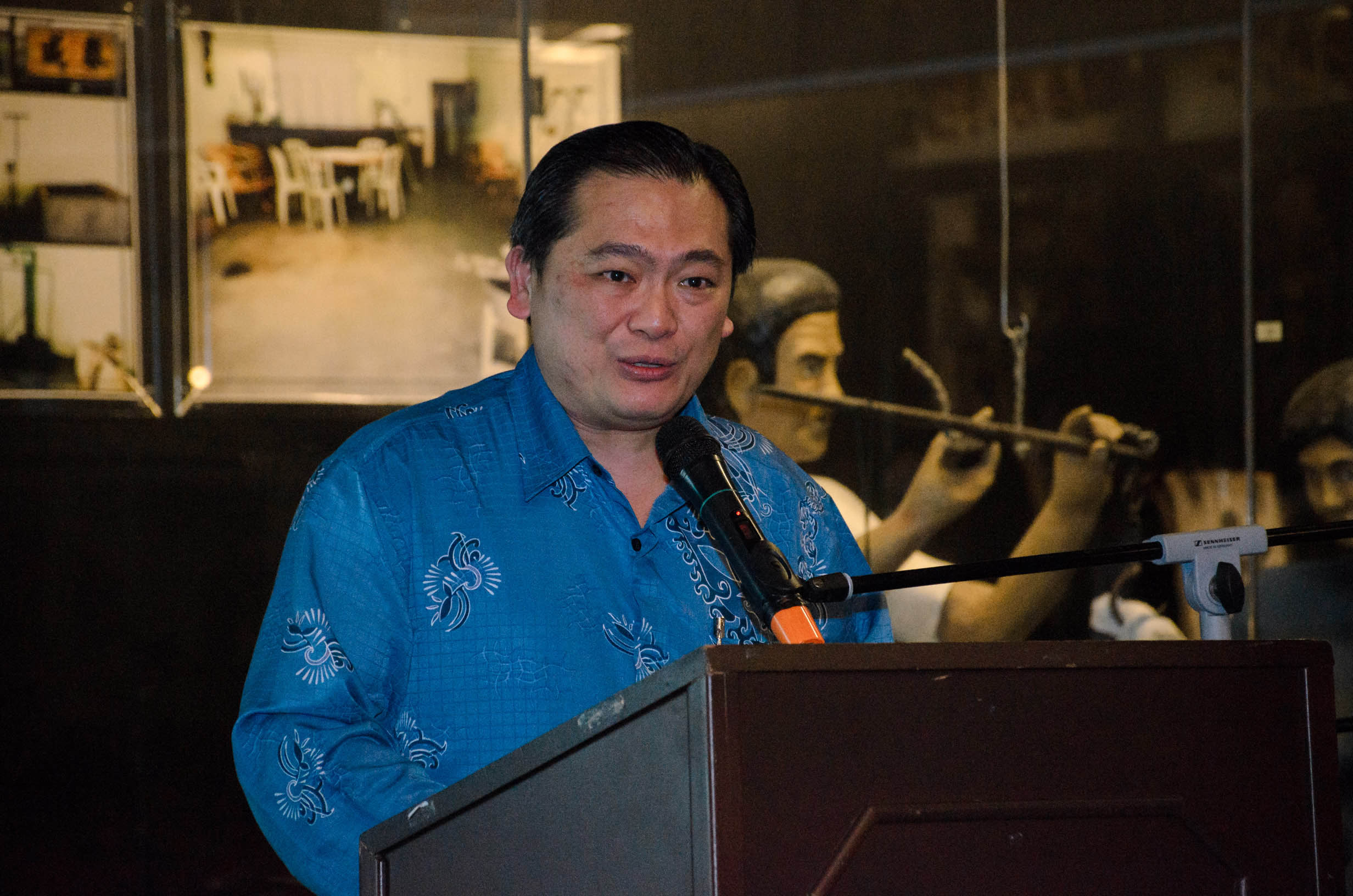
Dr Chong emphasising the importance of the history of tin mining industry
Dr Chong emphasised, “Tin Mining Festival is a multi-element activity that combines history, culture, education and tourism, and has even given the once-most-sought-over ‘tin’ a new life and mission. To most people, the history of tin mining has always been closely related to the Chinese community. However, its history is more than just that. Therefore, Tin Mining Festival is also be a good platform for Malaysians and tourists to understand the significance of the tin mining industry, its related history and contribution to the country’s development and modernisation. The tin mining industry’s cultural heritage status should never be forgotten.”
“As UTAR is located at Kampar and within the Kinta Valley, we also hope that the university can help to create an academic atmosphere and also to enhance people’s historical understanding about Kampar and the nearby communities, evolve this former tin mining town into a bustling knowledge hub and university town. I hope that this meaningful event will be continued as an annual event in Kampar and that it will provide a platform for people to have deeper and more specific understanding on the history and most importantly, the contribution of our ancestors in the industry,” he concluded.
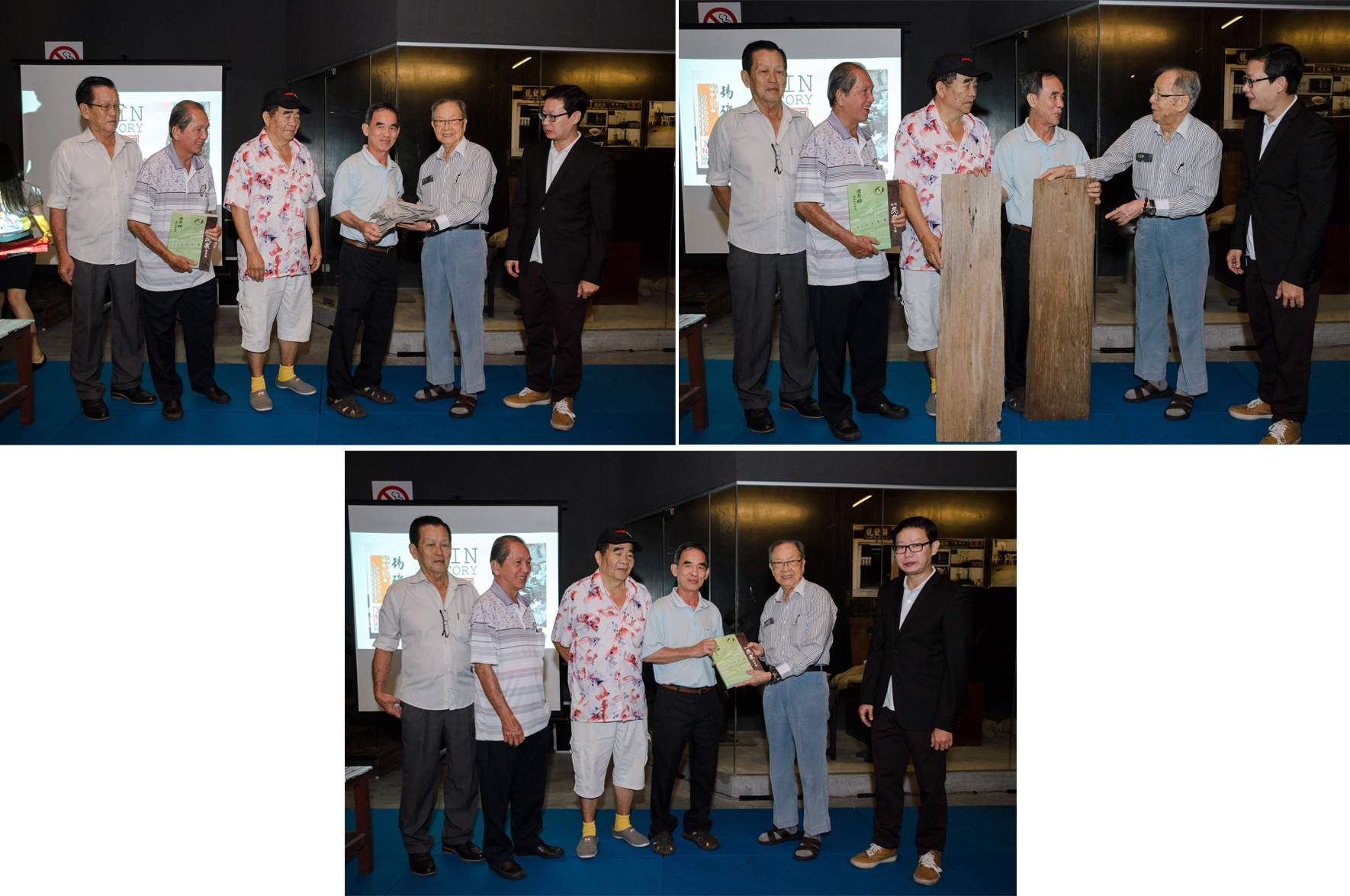
Representatives from Lembing Public Library presenting precious historical gifts, such as century-old work wear, mining equipment and the 60th Anniversary Special Issue of Lembing Public Library to Kinta Tin Mining Museum as souvenirs
The launch ceremony for Kampar Letterpress Gallery and “Hundred Years Seal – Live Printing Exhibition” (百年印记-活字印刷展) was held following the opening ceremony. It showcased printed artifacts and technology that were more than a hundred years’ old. The cultural relics in the gallery were donated by Kuon Ying Press (冠英印务局), a now defunct printing company in Kampar. Kuon Ying Press was founded in Kampar town in the year 1916 and was also a first of its kind in Malaya back then. It had played an important role in Kampar’s economy and cultural development. In the year 2017, the scion of founder for Kuon Ying Press decided to donate the tools to Kinta Tin Mining Museum to preserve such valuable artefacts for historical, cultural and educational purposes.
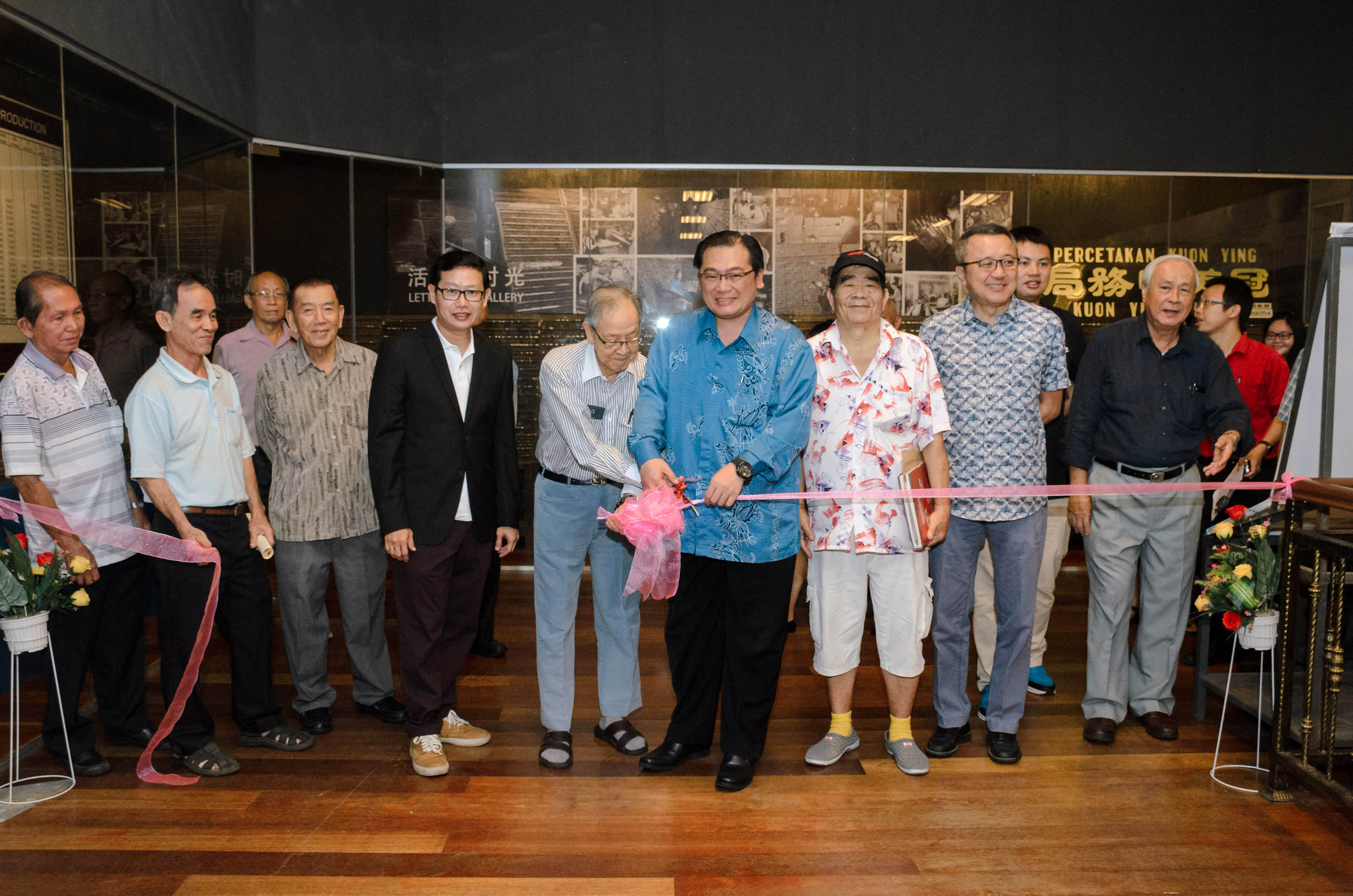
(Fourth from left) Chew, Tan Sri Hew, Dr Chong and other guests during the ribbon-cutting ceremony for Kampar Letterpress Gallery
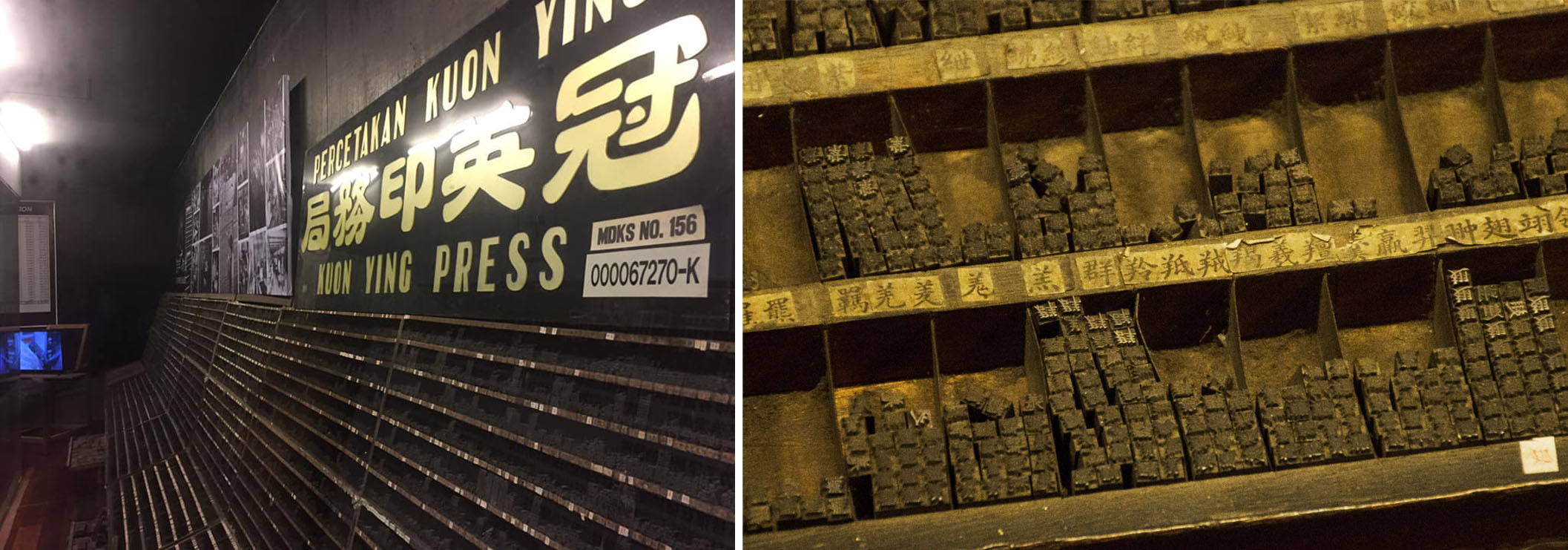
The newly unveiled Kampar Letterpress Gallery
A slight departure from previous years’ editions, the festival this year consists of four major components, namely guided tours around the museum, exhibitions, talks series, Orang Asli handicrafts and Kampar Hakka delicacies food bazaar, with each having its unique additions of events. One of the new additions to this year’s festival includes “The Past Glory of Kinta” Sketchcrawl. A joint initiative between the organising committee and the KL Urban Sketchers, the sketchcrawl allowed participants to experience the rustic beauty of Kampar, which is also home to scenic countryside sceneries and century-old building at its old town.
The talk series included “The History of Sungai Lembing” by Lembing Public Library General Affairs Chang Kok Lay, “Kinta Valley Tin Mining Towns and its Cultural Landscape” by UCSI University academic Teoh Chee Keong, “The Tin Mining Deities and Beliefs in Peninsular Malaysia” by Ulu Langat Community Museum Director Lee Kim Sin, “The Forgotten Hardships of Miners: A Case Study on Negeri Sembilan” by Negeri Sembilan Chinese Assembly Hall Historical Museum Director Chin Song Kead, “Let’s Go Travel” by PCP Publication Marketing Manager Elina Heng, “The Tin Heritage Route of Kinta Valley” by Chew, “Finding Sungai Lembing: The Forgotten Glorious Days” by Educator Tan Tai Chi, “The Story of Loke Yew: A Pioneer in Tin Mining” by Malaysian Chinese Cultural Society Deputy General Secretary Liew Kam Ba, “The Tin Empire of Eu Tong and Eu Tong Seng in The FMS” by University of Malaya History PhD student Walt Wen Wei and “This is Kampar” Photography Workshop by prominent photographer Peter Liew.
Tin mining was a thriving industry which made significant contributions to the country’s economic growth back in the 19th century. The proliferation of tin mining industry in Kinta Valley opened up employment opportunities which attracted the Chinese immigrants to settle down permanently in Kinta Valley as tin miners. Such influx of Chinese immigrants subsequently led to townships such as Taiping, Ipoh, Gopeng, Kampar and others mushrooming across Kinta Valley.
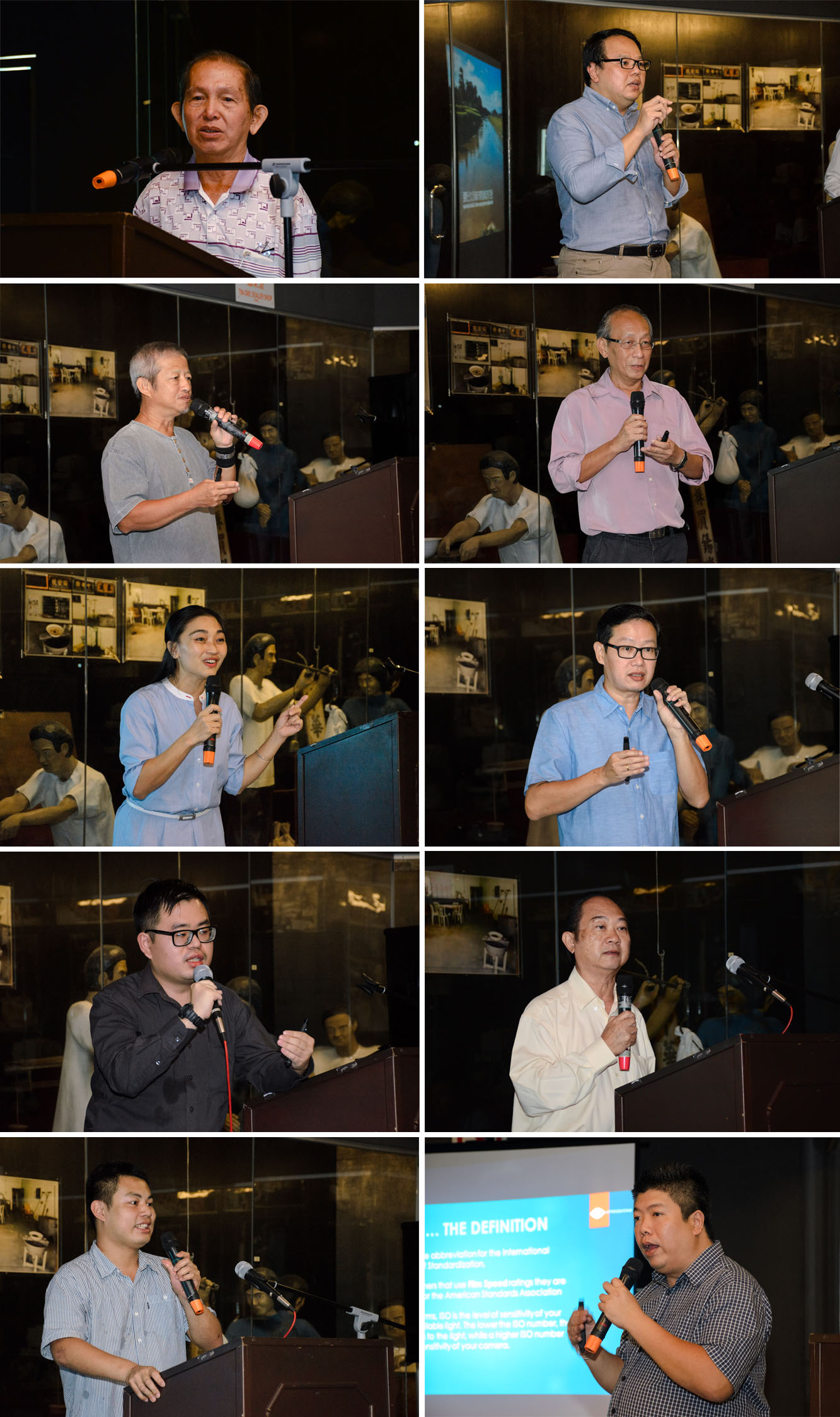
Clockwise, from top left: Chang, Teoh, Chin, Chew, Kam Ba, Peter Liew, Wen, Tan, Heng and Lee sharing their experiences and research related to tin mining in Malaysia
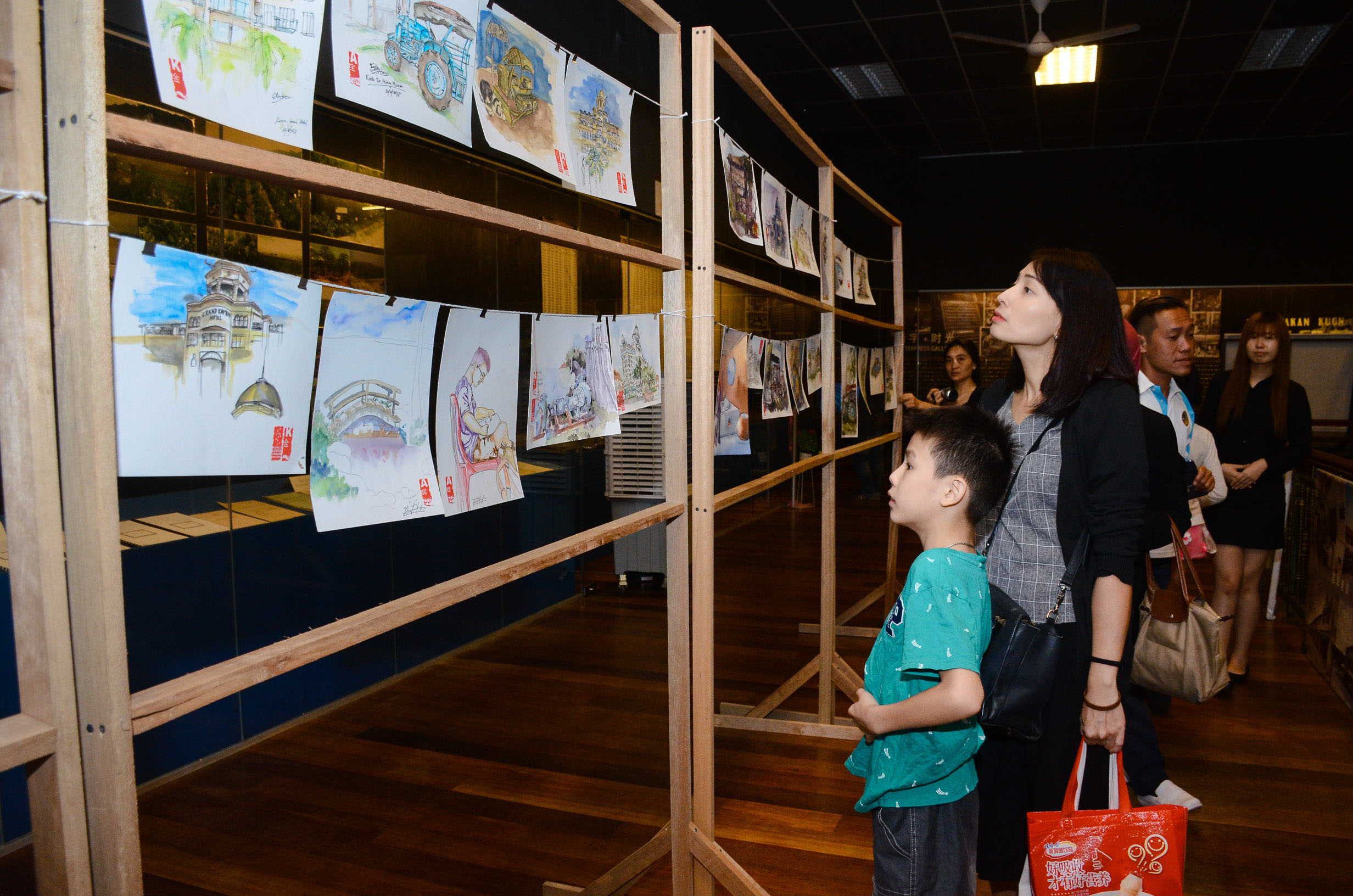
Visitors appreciating the beauty of Kampar through the sketches by Kuala Lumpur Urban Sketchers

Visitors learning the history of tin mining industries in both Kampar and Sungai Lembing through guided tours and exhibitions
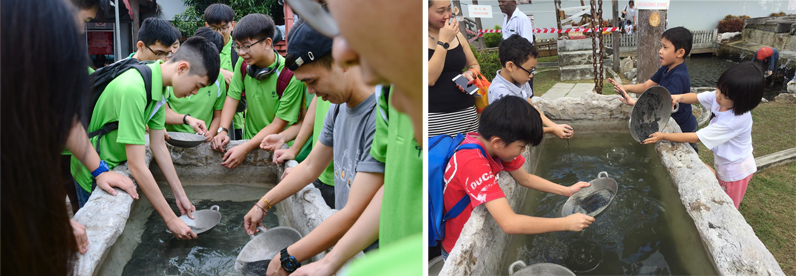
The young experiencing the dulang washing process
© 2019 UNIVERSITI TUNKU ABDUL RAHMAN DU012(A).
Wholly owned by UTAR Education Foundation Co. No. 578227-M LEGAL STATEMENT TERM OF USAGE PRIVACY NOTICE